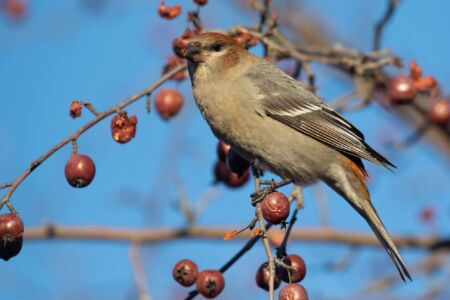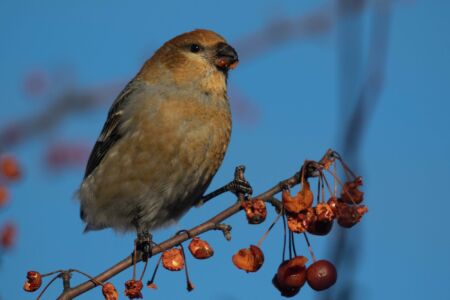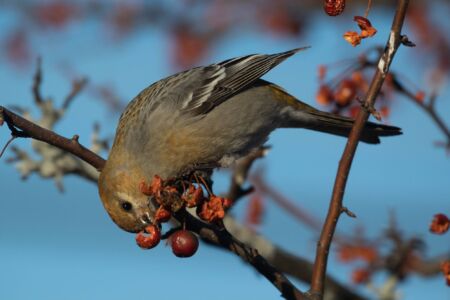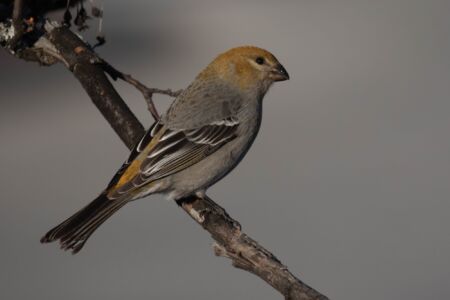
PIGR Party in New Hampshire
Jan 8, 2021 | by Alex Lamoreaux

Pine Grosbeak, photo by Alex Lamoreaux
Affectionately nicknamed “PIGRs” after their 4-letter banding code and their habit of pigging out on winter fruits, Pine Grosbeak have staged a moderate irruption into New England this winter. Multiple sites around downtown Keene, New Hampshire have been hosting flocks of 5 to 30+ Pine Grosbeaks, and on sunny days I love to spend time with these chunky winter finches and photograph them gorging on crabapples. They allow incredibly close approach, and seem to have nothing else on their mind but eating delicious crabapples; stopping occasionally to catch their breath and whistle sweet, slurred calls to their flock-mates. Upon landing in these ornamental trees each grosbeak instinctively finds its own spot in the dense tangles and apple-laden branches, spaced two or three feet apart from each other. They mash and stab at the crabapples with their stout bills to make an initial tear, and then use a combo maneuver of prying the apple apart with their bill and then lapping up the juicy insides with their large, broad tongues. Below are some of my photo highlights from a few sessions with these birds. Notice that none of these are adult males… there has been a notable absence of adult males despite how abundant Pine Grosbeaks have been this winter. Out of ~100 birds, I’ve only seen a single adult male so far and didn’t have an opportunity for photos of him. The vast majority of these grosbeaks irrupting into New England appear to be juveniles, both male and female, indicating a very successful nesting season! Juveniles are mostly light gray but have varying amounts of golden to rosy-orange wash on their heads and rumps. In general, juvenile males tend to show more reddish tones to their plumage. This subtle plumage coloration really accentuates these sturdy winter finches! Are you seeing any Pine Grosbeaks near you? Which other finches have you been seeing this winter? Let us know in the comments! Happy New Year!









































